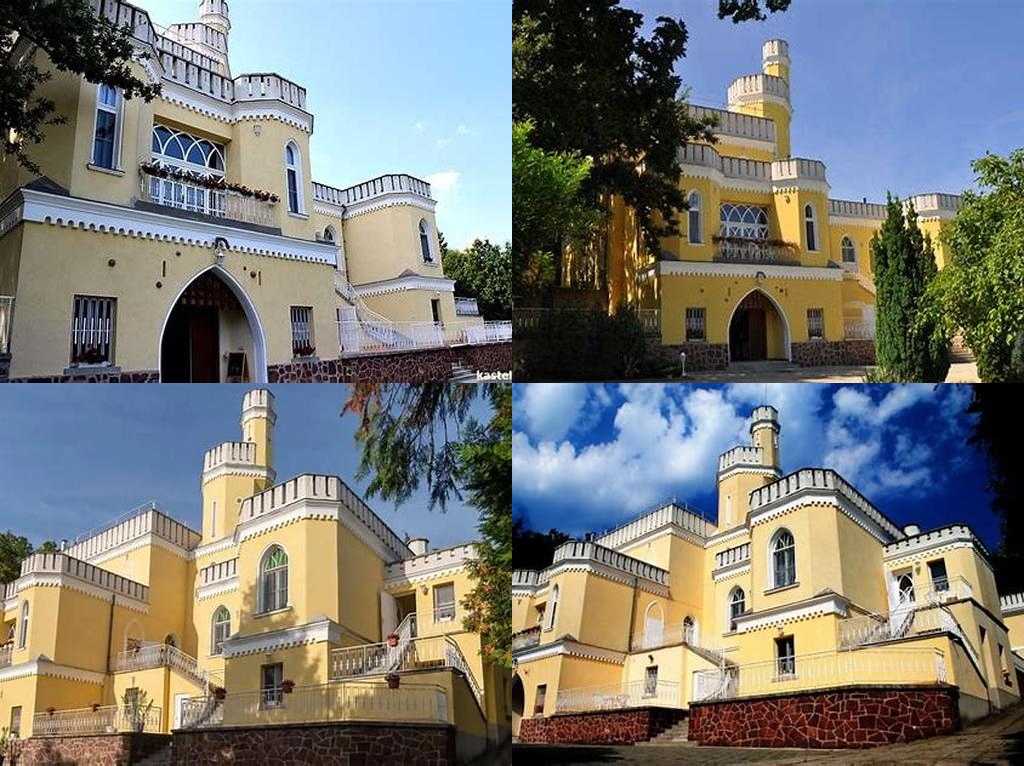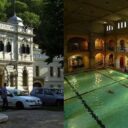
Sir-David-kastély, or Sir David Castle, stands quietly amid the rolling hills of Balatonszepezd, a lakeside village that always feels simultaneously discovered and hidden. There’s something deeply charismatic about this castle—not just in its elegant, neo-Baroque façade or the lush, centuries-old park around it, but in all the stories that linger in its halls. Unlike the grand, world-famous castles dotted around Europe, Sir David Castle survives as an intimate secret, charming travelers who prefer authenticity over crowds.
The tale of Sir David Castle begins in the late 19th century, during a period when Hungary’s aristocracy and banking families competed to outdo one another with ambitious estates along the coastlines of Lake Balaton. The mansion itself was commissioned by David Lackenbacher, a British-born merchant whose family found fortune in the Austro-Hungarian Empire. Seeking a summer escape, Lackenbacher chose a gentle rise just above Balatonszepezd’s picturesque vineyards, an outlook that allowed him sweeping views of the shimmering lake below and the rolling hills behind.
The castle’s design blends French-influenced neo-Baroque symmetry with local Hungarian craftsmanship. If you look closely as you approach the main entrance, ornate stone carvings frame the doorway—traditional acanthus leaves mingling with grape motifs, a witty nod to the region’s ancient wine heritage. Most impressive is the castle’s grand staircase, flanked by windows that catch the golden afternoon sun. It isn’t difficult to picture parties that once spilled out from these rooms into the gardens, aristocrats and artists mingling, and the sound of music drifting over rose bushes. The castle’s west wing—originally stables and servants’ quarters—has since been converted for exhibitions, though a few original fixtures remain for the observant visitor.
One of the most intriguing aspects of Sir David Castle is its enduring atmosphere of nostalgia. During the interwar years, the castle transitioned from private estate to artists’ retreat, thanks to the vision of Countess Ilona Szechenyi. She invited poets, painters, and composers from all over Hungary, turning the salon into a hotbed for literary and intellectual salons. If you close your eyes in the music room (look for the faded murals depicting forest dancers), you might still sense the creative energy that shaped Hungarian modernism in the 1920s and 30s. Many visitors are surprised by the modesty of the rooms; far from intimidating, their slightly faded elegance makes it easy to imagine lingering all afternoon over a coffee, a chess match, or a volume of poetry.
During World War II, the castle barely escaped destruction—local stories recount that fleeing soldiers respected the estate’s reputation as a haven for artists and left it largely untouched. The decades that followed were less kind. Under state ownership in the socialist period, the castle served, in turn, as a holiday home for factory workers and a summer camp for children from Budapest. Each generation left traces: names scratched into the old wood of the park benches, a faded climbing rope still tangled in a cedar tree. Restoration efforts beginning in the early 2000s have aimed to recover the estate’s former glory without erasing these layers of personal history. Today, you’ll find original parquet floors unearthed beneath years of linoleum, and restored stained glass sparkling above radiators installed in the 1970s.
Unlike some mansions that feel like museums, Sir David Castle actively invites guests to explore. Paths thread through a rambling English-style park, shaded by chestnut and lime trees, with views opening suddenly towards Lake Balaton just below. There’s no set order to follow, no velvet rope holding you back. A wooden boathouse on the edge of the property, once the launching point for moonlit rowing excursions, rewards those who wander a little further. Early risers especially enjoy the castle’s atmosphere before the sun heats up the terracotta roof tiles—mist rising off the vineyards, and the lake’s surface glassy and undisturbed.
In the evenings, when the castle closes its doors to the public, locals gather in the nearby village wine cellars, sharing stories about their grandmothers’ dance lessons in the castle ballroom or that infamous midsummer poetry reading interrupted by a thunderstorm. Visiting Sir David Castle is less about checking a landmark off your list, and more about stepping quietly into the rhythm of a place where generations have come simply to enjoy beauty, art, companionship, and the slow, peaceful life beside Lake Balaton. It’s never quite the same twice, and that’s part of what makes it linger in your memory long after you’ve walked down the hill towards the water.





